Choosing and lighting briquettes for grilling
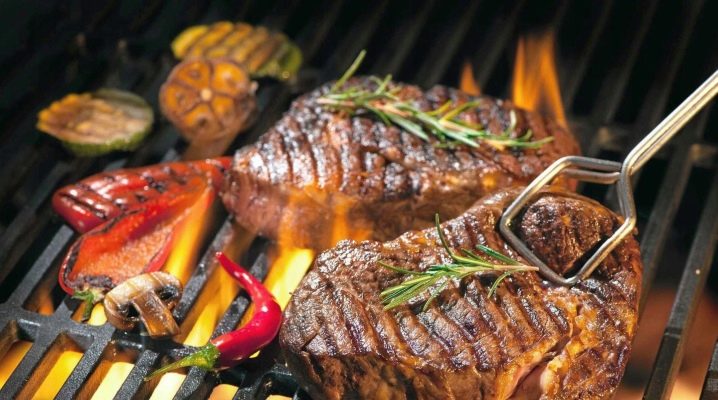
Both charcoal and briquettes, in principle, can be used with equal success. Pure charcoal sold in packages can partially crumble, so briquettes are produced for lovers of purchased fuel for barbecue.

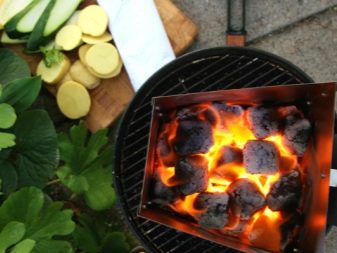
Peculiarities
Grill briquettes, although they are fuel coals, are not made by simple cutting of charred wood, as is the case with their own preparation by the user himself, but are pressed and processed with an adhesive, the simplest of which is starch swollen in hot water. In fact, this is the glued compressed coal, which has up to several times higher density than ordinary, untreated coal.
To a certain extent, it resembles the activated one sold in tablets, since it has the same increased density.
Simple coal, which has not been pressed, has an uneven fraction, as a result, small coals quickly burn out, and the brazier loses a significant part of the heat.

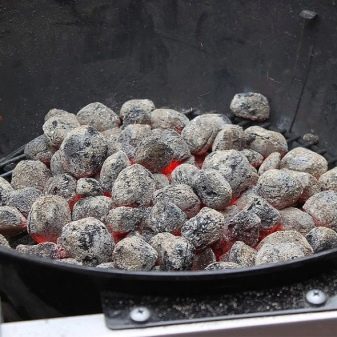
Uncompressed charcoal has a low specific heat generation. To fry several servings of kebab, you have to use at least several kilograms of it. This leads to the need to change the charcoal during the preparation of each of the portions. The only advantage is that such coal ignites quickly, no liquid for ignition (the same gasoline) is required.
Low-density coal burns much faster than pressed briquetted coal material - a maximum of half an hour, and only one ash will remain from it. Unpressed coal without additives that create a thick tarry smoke burns without waste at all - only carbon dioxide and water are released during its combustion, which cannot be said about briquettes, unburned starch or glue in which there is a lot of smoke.

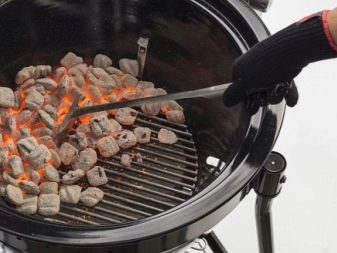
Top manufacturers
- Weber - this brand is a reference to deciduous raw materials. Smolders for at least 2.5 hours, evenly distributes the heat.
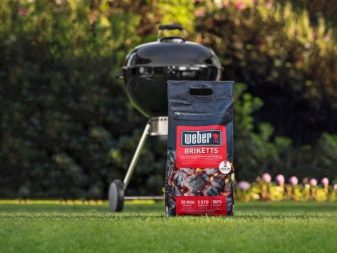

- Palisad - briquetted products of this brand do not form areas of open fire, which would lead to burning meat or fish, and vegetables would be charred almost instantly. Made from birch.
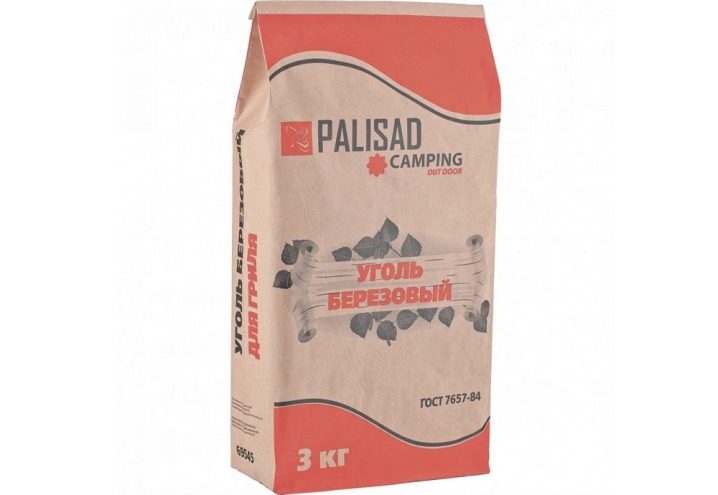
- BOYSCOUT - replaces 5 kg of simple firewood (bark and wood): to generate this amount of heat, only 2 kg of this brand of coal are required.
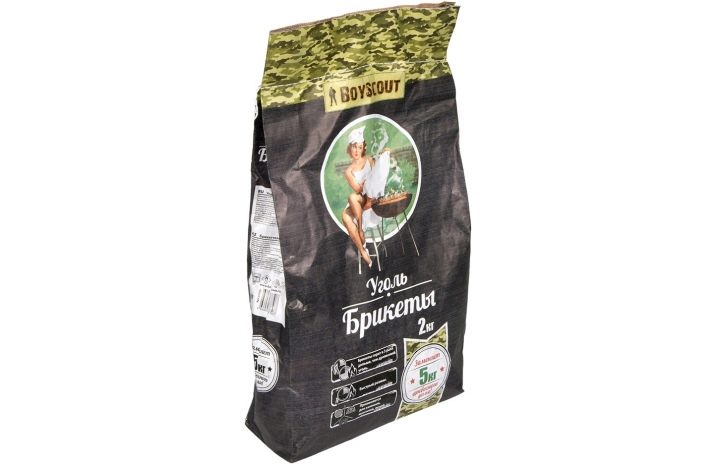
How to choose?
When choosing coal, they also pay attention to the type of wood. The denser it is, the more dense the coal itself will be, which means that it will not burn so quickly. Hardwoods - oak and boxwood, for example - are too heat-consuming, they burn in their original form much longer than the same spruce or other, much softer woods.
It is known that all carbonaceous organics when heated to a significant temperature - from 200 degrees Celsius - forms coal, so you can make it even from unburned roofing material or resin, collect carbon deposits from smoking candles and kerosene lamps, in general, make coal from anything. The cheapest production is compressed soot, which is collected by flushing (or blowing off) soot from the walls of devices, if only it is dried, filled with starch paste and compressed.
Coconut charcoal (not to be confused with coke charcoal) is formed when nut shells are burnt. Its higher density prevents it from burning quickly due to its low moisture content - just like hardwood coal.
However, it costs several times more due to the fact that coconuts do not grow in temperate latitudes.
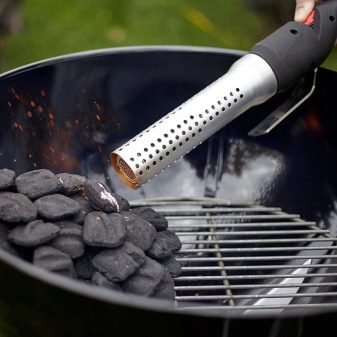
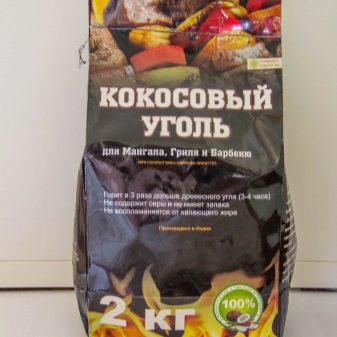
The production temperature of such coal is 600-700 degrees. The more the resulting coal is heated, the more pure carbon can be obtained: hydrogen formed by the rupture of inter-high molecular bonds is released entirely and evaporates immediately after the product has cooled.
Small coals burn out quickly - although they help larger brothers to ignite. In coal briquettes, in addition to the coal itself, there are sawdust and straw. They allow briquetted raw materials to burn longer - not half an hour, but up to 4 hours.
When choosing briquettes, pay attention to the composition: cheap products contain only general definitions, for example, “vegetable waste products”, and not “potato starch”, “spruce resin” and other specific mentions of ingredients.

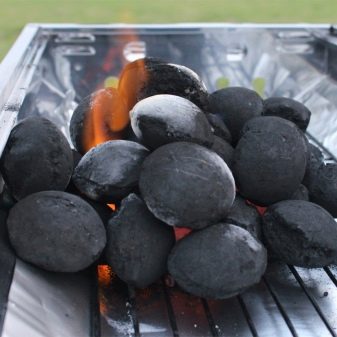
How to ignite?
Use a lighter fluid. Ordinary high-quality gasoline is also suitable here, which almost does not give off smoke, it is often refueled by owners of foreign cars.
Some people ignite a canister of isobutane spray at the end of a special gun with a steel tube. Using this improvised flamethrower, it is possible to light the coals in a few minutes. However, the cheapest option is a small fire made of dry twigs and paper / straw. Some people also use plastic bags as a fuse - if only the fire flared up as soon as possible, and the added coals, when poured into the brazier, would light up next.
Any smokeless substance is suitable as a fuse - the main thing is that it does not emit the smell of unburned oil products, for example, dry or medical alcohol, or homemade technical alcohol.
Do not burn low-quality gasoline, expired cologne, and anything else that comes to mind - a strong smell will make your kebab hazardous to health.
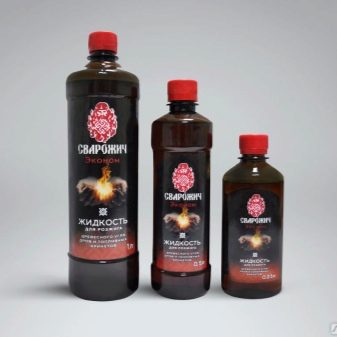

To maintain optimal heat for uniform roasting of large and round pieces of meat or fish, they use the so-called indirect heat - it is obtained not from an open flame, but during the smoldering process. An open flame that broke through when burning plain coal or briquettes is used only for frying flat chops, the thickness of the meat layer in which does not exceed 1 cm.
To nail down the flame, do not pour water - add a small amount of salt, it will not reduce the heat from the coals, including briquetted ones. As a result, the product will not burn, but it will not be undercooked either. The thermal potential possessed by coal or briquettes will be fully preserved. This is similar to adjusting the intensity of burning wood in a stove using a damper.














The comment was sent successfully.